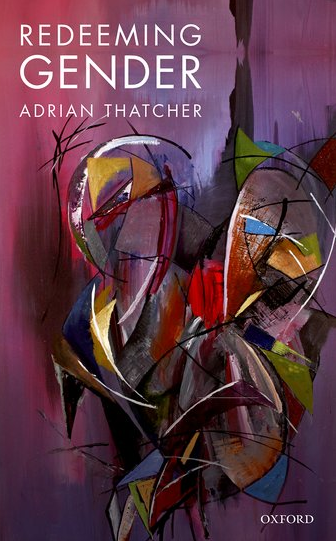Redeeming Gender by Adrian Thatcher
Accessible and deceptively challenging account of gender theory from an Anglican theologian, which offers something fresh to the human sexuality conversation
 Redeeming Gender
Redeeming Gender
By Adrian Thatcher
Oxford University Press
ISBN: 978-0-19-8744575-7
Reviewed by: Beth Allison-Glenny
Thatcher’s premise is that having two complementary ‘opposite’ sexes, male and female, is a modern invention, which has often been applied anachronistically onto scripture and tradition in our conversations about gender. He explores a theory developed by Laqueur that before the 17th century there was only one sex, ‘man’, and so women were simply deficient men.
In the first part of the book he discusses how this ‘one-sex’ theory in scripture and theology led to the discrimination of women and how a modern ‘two-sex’ theory fails us now.
The second part tries to show how theology can redeem gender, moving from the current starting position of sexual difference to instead starting with a position that there is an essential ‘humankind’ and men and women are only classes within it. Interpretations of Genesis on the complementarity of male and female making us the image of God are held in check by a theology of Christ being the true human image of God and by an understanding of similarity and difference as it is held in the Trinity.
The challenge that the image of God is to be seen in the body of Christ, over and above any fallen humanity’s imaging of God through being male and female is a helpful development of this line of theological anthropology.
I was especially heartened to read someone else draw out how complementarity of two sexes leads us to a particular view on sexuality. His interaction with the Church of England’s document ‘Issues in Human Sexuality’ will add something new and helpful to their (and thus our) continued debate around human sexuality, and it is gems like this peppered throughout the book that make it so worth reading.
Whether you agree with Thatcher will depend on the extent to which you accept Laqueur’s hypothesis that the two-sex theory is a modern invention, which – as discussed by Thatcher – is not an uncontroversial position.
It also begs the question whether it necessarily makes it wrong for us to apply a two-sex theory back on to Scripture simply because it is a modern understanding. Thatcher argues it is, if only because “theology can do better”. I expect his application of this critique of complementarity in to the human sexuality discussion may make people less likely to accept his other conclusions on sex and gender, but neither does he inhabit a position we can easily call liberal; he cautions that a two-sex theory to advocate the equality of the sexes is not the same as the new creation in Christ.
I was interested to note that the key theologians he discusses in the first half of the book are all male. He interacts with them using feminist theologians, and whilst there is an argument for saying that it is these men who have shaped the public debate on sex and gender so far, I would caution that how we tell theological history matters. It may be that different narratives about the one or two sex theories may have emerged if female scholars had also been the subject of such examination, rather than doing the examining.
In conclusion, this book is to be applauded for having considered both current gender theory on intersectionality and people who are intersex, as well as offering something fresh into the human sexuality conversation.
Whether you are inclined towards accepting Thatcher’s views or not, this book is well worth reading for its commentary on how we read Genesis in light of Christ as our image of redeemed humanity. Although there is some technical language at points, he writes in an accessible style for such a deceptively challenging book.
The Revd Beth Allison-Glenny is the minister of John Bunyan Baptist Church in Cowley, Oxford
Baptist Times, 11/11/2016